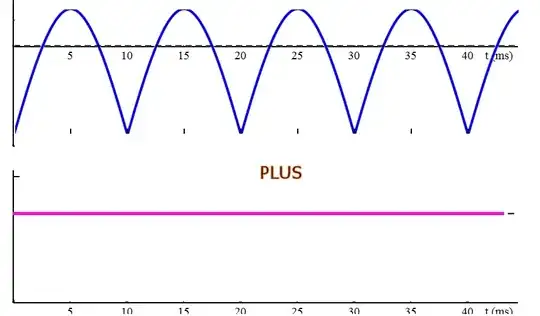Why does current associated with a rectifier said to have both ac and dc components. Also how are they combined?
-
Because it changes with time? Mathematically? – user3528438 Feb 22 '18 at 14:41
-
1The unfiltered output of rectified a.c. voltage is pulsating d.c. voltage. It is not a.c. since it never reverses polarity. – AlmostDone Feb 22 '18 at 14:44
-
2Low pass filter it, and it becomes DC. High pass filter it, and it becomes AC. Don't filter it at all, and they are combined. – Dampmaskin Feb 22 '18 at 15:04
-
Because it's average value is not zero (hence DC) and it varies periodically (hence ac) – Chu Feb 22 '18 at 15:40
-
@AlmostDone, Depends on what you mean by "AC." If you do the math, the output of a half wave rectifier can be expressed as the sum of a pure DC "component", plus an infinite series of pure AC sine waves. When one is attempting to understand the behavior of an electronic circuit, there are very good reasons to do that math. – Solomon Slow Feb 22 '18 at 16:15
-
@james large: Agree...point taken! – AlmostDone Feb 22 '18 at 18:52
2 Answers
AC is actually a term that has quite a vague meaning in EE.
Rectified AC is really a modulated voltage with a single polarity. As such it is actually an AC signal with a DC bias that keeps it always in one polarity.
So this...
Is also this...
BTW: Actually if you want to be pedantic, a rectifier delivers Alternating and Direct VOLTAGE components. The current could be anything depending on the load. The C in AC and DC is actually a generalization misnomer.
- 46,675
- 8
- 72
- 154
Any current or voltage at any place/time always has AC/DC components. AC/DC are on the continuum of frequency. DC just happens to be the case of 0 frequency. AC refers to all other frequencies.
Draw a random signal varying in time and it will have AC and DC components. Either at any time may be 0 in magnitude and in those instances we could say that a signal is purely AC or purely DC depending on the other being 0 in magnitude.
A frequency response plot is likely useful to see what's going on. Everything is AC on the plot. Since the plot is logorithmic, it never actually shows you DC on the left hand side. If they extended it back to 0, that point would be the DC component.
A sinewave has an average value of 0. So it's considered purely AC. A rectified sinewave now has an average value that's not 0. This average value is the DC component. The new wave still varies around this average value, so there's still AC components in there as well.
- 12,818
- 23
- 45


